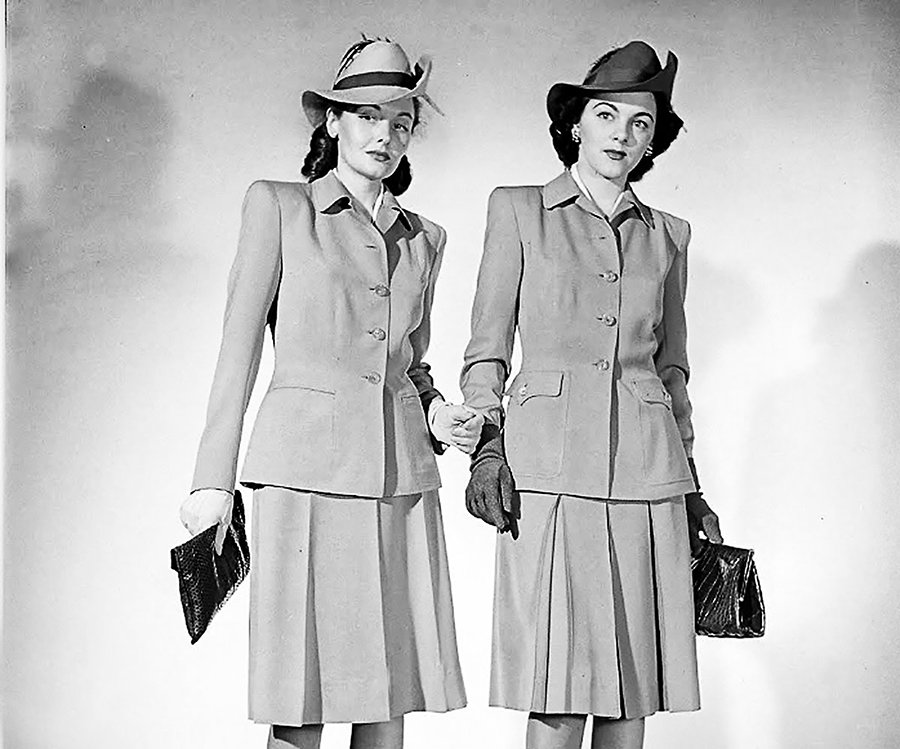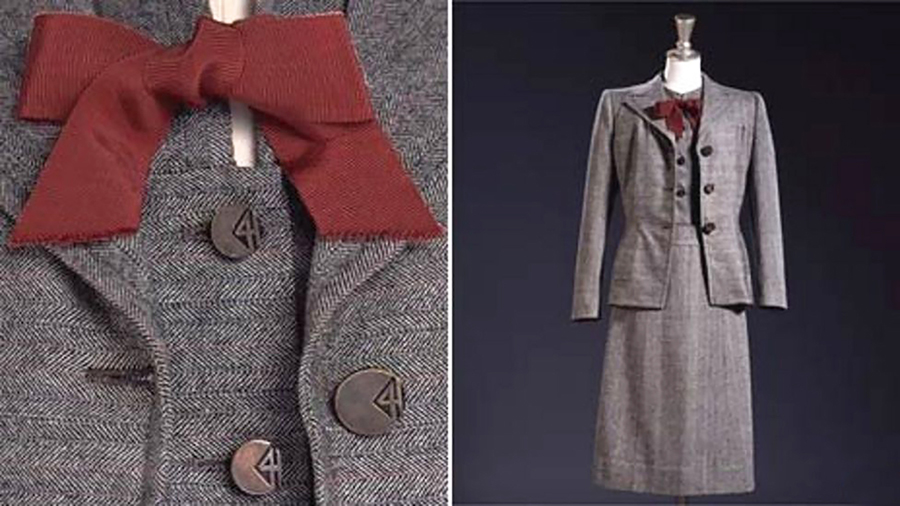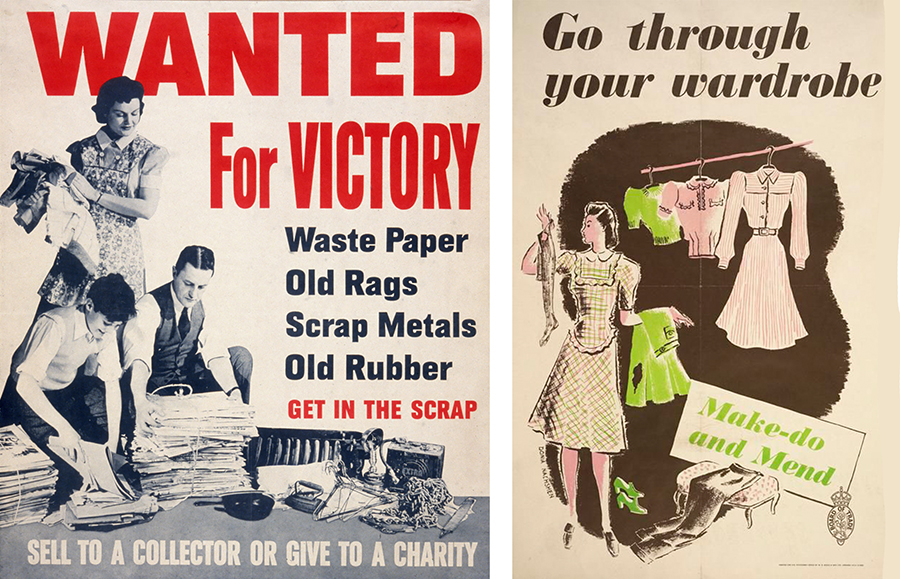Supply chain issues and shortages of raw materials have become a reality as the fallout from the Ukrainian war affects global commodities, and natural resources become increasingly difficult to source. But the world has been here before.
During the Second World War, material scarcity bred innovation and established responsible practices that lasted for decades. Can reviewing your product with a scarcity mindset create a new trend or even streamline your production process for greater success?
The Second World War was an unlikely time for a social design experiment. In a worldwide crisis, the government of the United Kingdom decided to support a socialist idea to make sure its population would not only be fed, but also properly housed and dressed to make it through the war years. Known as the Utility Scheme, the concept was based on a Utopian idea of providing good design for the masses and educating them on modem living in the process.
Scarcity is an ambiguous concept. It is most commonly associated with something negative, as in a shortage or lack of desired items or necessary materials. It may be due to poverty, unequal distribution of wealth, corruption, or the depletion of natural resources. It can also occur when the supply chain of products and materials is temporarily disrupted because of political crises such as war and boycotts or natural disasters such as floods or earthquakes. Yet the notion of scarcity is also applied, more manipulatively, in capitalist consumer culture and marketing strategies. It is the very concept on which the attractiveness of limited editions and exclusive brands is based. In these instances, scarcity is introduced on purpose to make a product or service more desirable, precisely because it’s designed to be rare and only available to a few lucky insiders.

During the Second World War, scarcity suddenly became part of the daily lives of every upper-, middle- and working-class citizen in the countries involved. Because of disrupted trade routes, the supply of resources was severely limited. Moreover, the war industry demanded that the majority of materials go into the manufacture of weapons, uniforms, and transportation vehicles, while workers and factories were assigned to produce for the military instead of the consumer market. There were immediate shortages of raw materials such as wood, metal, rubber, cotton, wool, and silk, and as the war industry was prioritized, scarcity was most acute in consumer goods. Prices of new and second-hand products rose drastically as retailers and manufacturers ran out of stock.
The rationing of clothing began in June 1941 and would last until 1952, some years after the war had ended, and most scarcity issues were resolved. As rationing alone proved insufficient to solve the shortages and price raises, a comprehensive plan was devised to make sure that enough clothes would be available for the entire population. The clothing plan was part of the Utility Scheme, which also included footwear, furniture, crockery, and other daily goods such as pencils and cigarette lighters. It was planned, organized, and controlled by the British Board of Trade, which installed and worked closely together with several commissions comprised of people from the industry and the state.

The intentions of the Board of Trade, however, were very broad. It was not only concerned with supplying the bare necessities to those in need but aimed to produce good quality products for everyone. These goods were to be made with as little material and labor as possible, and according to what its advisors considered principles of good design. As opposed to providing only a cheap, temporary solution, Utility products were made to be durable and modern in an attempt to educate the public on modern taste.
The Utility designs were characterized by straight lines, a slim silhouette, and little or no embellishment. The women’s clothes tended to be practical and were influenced by the look of uniforms, anticipating the different roles that women fulfilled during the war. To save material, unnecessary pleats were not allowed, and neither were double-breasted jackets and long socks for men. Things like buttons, buckles, zippers, and elastic were limited because metal and rubber were needed for the war industry.

Skirts were to be knee-length, coats were kept short, and boys under thirteen were not allowed to wear long trousers. Extra pockets were discarded, as were decorative elements such as embroidery, applique, or lace. Men’s suits had small collars, no flaps over the pockets of the jacket, no turn-ups on the bottoms of trousers, no slits, and buttons on the cuffs. Colors, however, were not restricted. Fabric prints for dresses, for example, were often small, busy patterns of colorful flowers that were easy to put together without having to waste fabric to make the motif connect in a repeat pattern. The Board of Trade estimated that all these regulations saved millions of yards of cloth.
As one would expect, not everyone was convinced that austerity measures and fashion would go well together. The name Utility did not help, as it conveyed a sense of drab uniforms or purely functional clothing that had nothing to do with fashion. Since both the trade and the British public were initially apprehensive of the Utility Scheme, the Board of Trade invited well-known designers of the time to design a range of items, including a topcoat, dress, blouse, skirt, and suit. The involvement of these esteemed designers and the favorable reports their work received from magazines such as Vogue and Harper’s Bazaar helped promote Utility clothing to the public.
Aside from the few new garments that one could buy on coupons, people were urged and often had no other choice than to endlessly repair, recycle, and share whatever was available. The British government issued leaflets with instructions on how to repair damaged textiles and how to alter clothes. There were items on how to line coats with pieces of recycled textile to make them warmer for the winter and how to fashion a jacket and skirt out of an old men’s suit. Children’s clothes made of pillowcases or blouses made of handkerchiefs were not uncommon. As natural and artificial silks were much sought after, parachute nylon sometimes proved an acceptable substitute material for making wedding dresses or lingerie.
The British government was able to turn a material crisis into a temporary, rather successful solution. It took control over the total functioning of the commodity network, determining the fate of designers, manufacturers, and retailers alike, some of whom were put out of work or were forced to radically change their practices.
Today it is often assumed that the market will take care of solving our problems, whether they are environmental, social, or economic. Yet, so far, the majority of commercial design and technological innovation has not been deployed to target the long-term challenges humanity is facing but is actively engaged in aggravating them. The Utility Scheme shows that in a time of acute crisis, it is necessary to not only look at the design and production of scarce goods but also to reconsider the political, economic, and social systems and conventions that surround them.



































